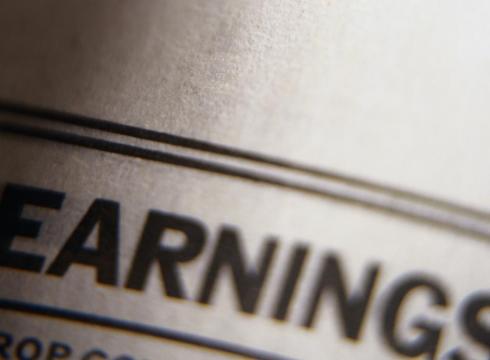by Hubert Marleau, Market Economist, Palos Management
August 1, 2025
The U.S. has been transformed into a high-tariff economy with indications that a 15% tariff is the baseline rate for most imports, with higher duties on some specific goods, making the effective tariff level at 17.3% - the exact one Trump wanted all along.
The actual tariff labels are coming in lower than the worst fears; nonetheless they are up considerably from the 3% recorded in 2024. Two important factors have allowed the U.S. to get away with this without any meaningful retaliations, China being the only valid exception. First, its trading partners can ill afford not to do any business in America because it is the largest economy, the richest country and the biggest military power in the world. Second, governments tend to acquiesce to American trading demands because the U.S. is the only country that can offer a security blanket. Put simply, western democracies are willing to put up with its demands in return for accessibility and protection. Walter Russell Mead, a Wall Street columnist, wrote: “President Trump has nailed down deals that, unless the courts judge his assumption of sweeping powers unconstitutional, will stand as his most consequential achievements to date. In the deals with Japan, the E.U. and the U.K. and other key allies made significant concessions to the administration’s demands-without extracting equivalent concessions from the U.S.”
Two articles explain why Trump's trade deals have been exceptionally one-sided in favour of the Americans
In the first, Stephen Nagy, a senior fellow at the Macdonald-Laurier Institute (MLI) discusses how traditional U.S. allies like Japan, South Korea, Australia, Canada and many others struggle to co-ordinate responses to US economic coercion under the Trump 2.0 administration. It highlights the structural challenges of collective action among middle powers, framed through the lens of game theory and the prisoner’s dilemma. Each country’s attempt to resist U.S. tariff threats is analysed, showing how defection and individual agreements with the U.S. undermined collective efforts. The article also emphasizes the difficulty of maintaining unity among middle powers in the face of economic nationalism and expansion. The Trump administration’s approach may lack elegance and diplomacy, but its brutal clarity serves strategic purposes. By forcing allies to choose sides unambiguously, it constructs a coalition capable of sustaining an international order that, while less liberal than its predecessor, remains fundamentally more attractive compared to the authoritarian alternative. In a nutshell, its calculation remains clear that accepting American economic nationalism as the price of security guarantees and systemic stability represents the least bad option.
In the second article, “What economics can teach foreign-policy types,” The Economist argues that foreign policy increasingly relies on economic tools such as sanctions, currency roles, trade restrictions, and control over critical supply chains, to exert influence, achieve strategic goals and project national influence, highlighting how economists’ emphasis on trade-offs, incentives, and systemic thinking can sharpen diplomatic strategy. Drawing on historical examples, and thinkers like Albert Hirschman, the piece urges policymakers to better understand geoeconomics: the use of economic leverage as statecraft. It also calls for clearer communication from economists to ensure their insights are practical and persuasive in a political context. The bottom line is that because of U.S. dominance in many critical nodes, it can through pressure, both political and diabolical pressure exert a gravitational pull to its economy through economic leverage.
Inflation Is the Fly in the Ointment
So far, the U.S. has not smashed the iron economic law of comparative advantage, since growth has not faltered and inflation has not accelerated as much as many strategists had predicted. There are 3 big reasons for this:
First, many importers and exporters are holding off on large price changes until they get full clarity on what tariff rates will be.
Second, the US economy is a relatively closed one, with imports accounting for only 13.5% of nominal GDP, and is therefore somewhat protected from the inflationary effect of higher rates.
Third, the apportioning of the burden of levies between exporters - importers on one hand and businesses and consumers on the other - have probably not yet adjusted to what may be the new income and price elasticity of the imported goods involved. In other words, who will ultimately bear the cost? Will it be suppliers, by cutting prices on the front end; consumers, by paying higher prices at the checkout counter; or US businesses through their profit margins? That said, there are, however, unmistakable signs that damage from the US tariffs is becoming increasingly evident, says Bloomberg: profit margins are being squeezed, capital spending has frozen, price hikes are spreading and boycutting of US products is occurring. Just ask GM, Ford, Proctor and Gamble, Walmart, Mattel, Nike, Subaru, Adidas, Ralph Lauren, Hasbro, or RTX.
(P.S. As an aside, my take on the situation is that Canada could avoid this dilemma if it were willing to accept complete and full freedom of exchange with the US in matters of capital, ownership and trade. That is: no restrictions on capital movements, no quotas on US imports, no restrictions on US ownership and, of course, no tariff on all goods made in the USA.
Unfortunately, this is not likely to happen because there will never be any mutual agreements of any sort among provincial governments, territories, indigenous communities, activists [left and right] and the federal government, whose political interests are significantly more important to them than that of the people at large. Canadians speak of freedom but the aforementioned entities are unwilling to give it to them, using sovereignty as the pretext, substitute or justification, depending on who they are.)
Meanwhile thank God, Canada is in a partially free tariff zone with the US and Mexico under the USMCA trade deal arrangement, which is keeping the average tariff rate on Canadian goods among the lowest in the world, thereby putting Canadians, perhaps, in a relatively good place to weather the storm until a final agreement is reached. In this context, Bessent has just signalled that the U.S. is willing to work with Ottawa on punishing metal tariffs that are hammering Canadian and US aluminum and steel producers and hurting the automotive industry.
Interestingly, an appeals court is questioning the Administration’s use of an emergency law (fentanyl) to justify tariffs on Mexico and particularly Canada, the judges concerned expressing scepticism about the interpretation of the law, noting that it could upend Congress’s tariff schedule.
What Took Place in the Week ended August 1?
On Monday, U.S. stocks registered mostly losses; nonetheless, the S&P 500 closed at 6390, scoring another all-time high, because the U.S., after a hard-fought fight, had struck a trade deal with the E.U., averting a bruising trade war, satisfying business leaders, and creating a big win for Trump.
On Tuesday, US stocks lost momentum as investor attention turned away from trade news to prints on the economy that showed business activity was gradually cooling. The S&P 500 fell by 0.3% to end the day at 6371, thereby snapping a series of 6 record streaks.
The Conference Board, meanwhile, reported that consumer confidence had improved in July, as did the index of forward-looking expectations, which increased to 74.9 from 69.9 - not enough, however, to dispel the possibility of a recession down the road.
Second, the BLS showed that the labour market had held up in June but with signs of fatigue: jobs openings fell and so did layoffs and discharges, while hiring and quitting activity remained muted, with more sectors experiencing job losses than gains - a rarity outside of a recession.
Meanwhile, the Atlanta Fed’s GPDNow tracking model showed Q2’s real GDP had increased at the annual rate of 2.9% from a previous estimate of 2.4%. This boost was the result of a considerable decrease of 30.3% in imports, reversing the build-up of imports that took place in Q1to avoid Trump’s tariffs.
On Wednesday, as was expected by the Atlanta Fed, real GDP rose at a seasonally-and inflation adjusted 3.0% annual rate in the June quarter, wildly exceeding the 2.3% that was generally expected by economists surveyed by Wall Street Journal. Unfortunately, this is a head fake. Stripping out volatile government, inventory and international trade data, final sales to private domestic purchases, which track demand from consumers and businesses, only rose at a 1.2% rate versus 1.9% in Q1. In this connection, we are starting to see the effect of trade and immigration policies on private economic behaviour, giving the politically motivated Waller and Bowman a possible excuse to dissent with the Fed decision to leave its federal fund rate target range at 4.25% to 4.50%, where it has been since December, much to Trump’s chagrin. But what other choice did the policymakers have? With the labour market in balance and inflation above target even if you look through tariff effects, what other choices were there? Growth is not a target of the Fed, only employment and inflation. In this regard, expectations for inflation have risen, according to the swap market, and businesses are creating jobs, but hesitant about layoffs, according to the ADP’s July report. That is why the monetary stance is where it is. It was the first time since 1993 that 2 governors were in discord with the Fed’s 12-member board. This resulted in the S&P 500 decreasing 0.1% to 6363, after Powell said hawkishly that his policymakers were not yet ready to signal whether they were inclined to cut interest rates in September, thereby decreasing the probability of having one to less than 50%.
On Thursday, the S&P 500 lost all its momentum after a morning lift, despite strong Meta and Microsoft earnings and their encouraging prospects, giving up gains in a choppy session. The benchmark fell 0.4% to 6339, dragged down by tariff concerns. (Incidentally, headline and core PCED inflation rates were 2.6% and 2.8% y/y respectively, having been stuck around these levels since the start of the year, clearly justifying the Fed’s decision to keep interest rates unchanged.
On Friday morning stock futures pointed lower, reacting badly to Trump’s August tariff blitz on numerous countries, on top of a disappointing job report for July and questionable earnings from Apple and Amazon. Given that traders had plenty to dissect, the S&P 500 fell sharply lower to 6238, registering a 1.6% decrease. For one, the U.S. economy created a stingy 73,000 jobs in July less than the 100,000 that a Wall Street survey was expecting. The unemployment rate rose to 4.2% as well, solidifying the chances of a Fed rate cut in September. Indeed, yields on 2-year treasuries fell a whopping 28 bps to 3.68%, while 5-year terms called for an immediate rate cut to the 4.00% t0 4.25% range.
The Near-Term Stock Market Outlook
Last week, I wrote: “The Trump trades have performed well, getting wins on all fronts. In the 6 months ended July 21, the S&P 500 scored a 4.7% gain, bitcoin rose 6.2%, the dollar index fell 7.6%, oil prices decreased 11.3 % and 10-year bond yields declined 20 bps. Some say that investors may be getting tired of charging ahead, in need of a rest. So far the earnings season shows that AI spending is boosting the profit of software and semiconductor businesses while traditional businesses are struggling with Trump’s trade policies. Maybe so, but I would not dispense with value stocks because the second-quarter growth estimate is still 2.4%; they are relatively very cheap and they have not been in a bull trend in more than 2 decades. Why? Since July 7, the skew index, an excellent measure of potential tail risk in the financial markets, has increased from an elevated level of 137.96 to an even more elevated level of 159.41, which stemmed from the growth sector of the market and from another meme-stock frenzy.”
This week, investors got a reality check. Given record high stock valuations relative to the money supply, nominal GDP, and several other broad economic indicators, they couldn't stomach a combination of a sticky rise in inflation and a sudden, unexpected, screeching halt in job creation in May, June and July, tagged with uncertainties of how the later-round effects of the slate of new tariffs may lower growth prospects. Right now, both the N.Y. and Atlanta Fed NowCasting models have real GDP estimated growth of 2.1% for Q3., a forecast that might prove to be too optimistic. Many Wall Street strategists are even suggesting that investors should consider a rotation out of cyclical and growth stocks into defensive sectors like healthcare, staples, real estate and utilities.
Copyright © Palos Management











